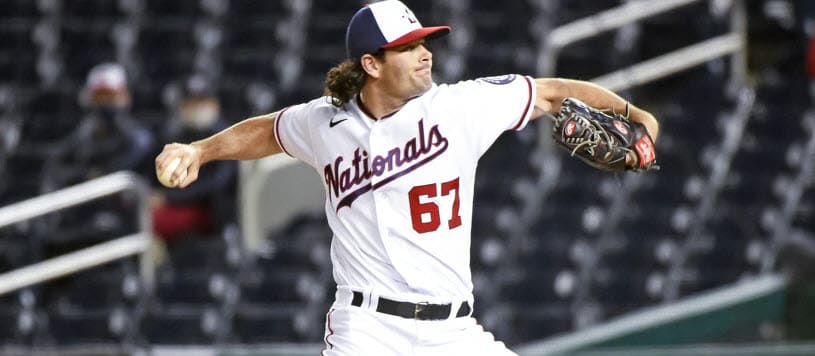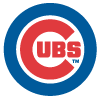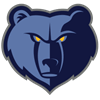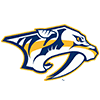Last week we examined some shaky AL bullpens, but they don't have a monopoly by any means. The are plenty of bullpens in the National League with evolving roles, including some with decisions on who will get the call in the ninth inning.
With so many undecided bullpen scenarios, I found myself leaning to a specific plan of attack on draft day. Basically, I targeted an actual closer to anchor my bullpen, then tried to fill in behind him with pitchers I felt could eventually work themselves into relatively consistent save chances. Challenging? Absolutely. However, there is great satisfaction in outmaneuvering your opponents. This approach tests your scouting and assessment skills, as many times the mainstream will select a pitcher – often the primary set-up guy – and label that pitcher the next in line for saves. Interestingly, that guy is only the benefactor in maybe half of the scenarios. Sometimes there is a better option. Our goal here is to identify him, hopefully before the word gets out.
The bottom line, again: The better teams (usually), with more quality pitching depth, barring injuries, are usually both more predictable and more productive with regard to providing useful fantasy statistics. Ideally, you could fill your staff with pitchers from better teams with the depth to maintain generally static roles for their bullpen arms. Unfortunately, those guys tend to be expensive on draft day and almost never appear on the waiver wire. That said, we need to look at some teams, in
Last week we examined some shaky AL bullpens, but they don't have a monopoly by any means. The are plenty of bullpens in the National League with evolving roles, including some with decisions on who will get the call in the ninth inning.
With so many undecided bullpen scenarios, I found myself leaning to a specific plan of attack on draft day. Basically, I targeted an actual closer to anchor my bullpen, then tried to fill in behind him with pitchers I felt could eventually work themselves into relatively consistent save chances. Challenging? Absolutely. However, there is great satisfaction in outmaneuvering your opponents. This approach tests your scouting and assessment skills, as many times the mainstream will select a pitcher – often the primary set-up guy – and label that pitcher the next in line for saves. Interestingly, that guy is only the benefactor in maybe half of the scenarios. Sometimes there is a better option. Our goal here is to identify him, hopefully before the word gets out.
The bottom line, again: The better teams (usually), with more quality pitching depth, barring injuries, are usually both more predictable and more productive with regard to providing useful fantasy statistics. Ideally, you could fill your staff with pitchers from better teams with the depth to maintain generally static roles for their bullpen arms. Unfortunately, those guys tend to be expensive on draft day and almost never appear on the waiver wire. That said, we need to look at some teams, in what seems like turmoil, to hopefully find some bullpen value.
Let's review some NL bullpens with question marks as we navigate the 2024 season:
Nationals – We'll pass along kudos to a fine closer fill-in. The Nats have often relied on set-up guy Kyle Finnegan to finish games the past couple seasons, but they probably want Hunter Harvey to claim the gig and run with it. He has an electric arm (when it's firmly attached), but injuries have tarnished his recent results. Just last week he took a comebacker off his nonthrowing hand, but he luckily avoided a significant injury. This is one of those relatively deep pens. They have righties Dylan Floro, Jordan Weems, Matt Barnes and southpaw Robert Garcia to bridge from the starter to the endgamer. There is also an interesting insurance policy in veteran power arm Tanner Rainey, and I think he could grab occasional saves if Harvey and Finnegan struggle or get hurt. Both Harvey and Rainey have pretty ugly injury histories, making Finnegan all the more useful. I like Harvey to lock things down as the primary closer at some point, and Finnegan makes a good handcuff if your roster allows for that kind of luxury.
Padres – The Padres look competitive in the tough NL West, but there are some questions to be answered in their bullpen. They currently have a proven closer so they may not be conducting tryouts early on, but I think a decision on the role of the best arm (when healthy) could end the speculation. The consensus focuses on Robert Suarez, who was overseas in Japan until last year. Closing is not new to Suarez, who saved 67 games in 2021-22 for the Hanshin Tigers. He has the arm – he can touch triple digits – and he has displayed respectable command, but this is a step up in competition. The question mark is Yuki Matsui. He too was a proven closer in Japan, and I think he might be slightly better-suited (eventually) to the closer's role. This is a deep bullpen with set-up men Enyel De Los Santos and Wandy Peralta. They even have a proven closer from Korea – Woo-suk Go – biding his time at Triple-A El Paso.
Brewers – I like this one. I think we're seeing the development of a top tier closer, and it's happening pretty quickly. The Brewers have a pretty nice pen, and Abner Uribe appeared to be emerging as the interim leader. The question is, who will be the leader once their previous closer returns from a back injury? Devin Williams saved 36 games in 40 chances in 2023. He struck out 87 in 59 innings and posted a brilliant 1.53 ERA. He is expected back around the All-Star break, and I have no doubt he'll be expecting to work in the ninth inning. Uribe still struggles a bit with command at times, but he does appear to be making progress. However, assuming Williams comes back at full strength, Uribe's immediate future could be as an ace set-up guy. And, the Brewers already have one of those in Joel Payamps. We could be looking at the best bullpen in baseball in just a couple months, and I haven't even mentioned a couple other capable bridge-builders like lefty Hoby Milner and righty Trevor Megill.
Marlins – This one appeared to be sorting itself out late last year as their best option, Tanner Scott, took the gig and settled in. Unfortunately, the southpaw is probably not going to ever be a top tier closer. That leaves the door open for a cast of many including Anthony Bender, and other set-up guys like Sixto Sanchez, JT Chargois and lefty Andrew Nardi who could all get into the mix at some point. Bender probably would be a lukewarm choice to challenge Scott, if anyone does, but I'm watching a dark horse. Keep an eye on George Soriano. He's learning on the job, and I don't think he's quite ready but he could grow into it. Scott is probably pretty safe for right now, but the day could come when he at least shares save chances.
Phillies – Let's go back to those school days. Books on the floor, here's your test. Q1. Who's the best closer option in Philadelphia? A. Jose Alvarado B. Jeff Hoffman. C. Seranthony Dominguez D. None of the above. Right now, it's pretty much mix and match, with Alvarado handling most lefties, Hoffman facing tough righties and Dominguez coming on earlier if flames pop up. Realistically, with his name on so many other innings, Dominguez probably isn't in the closer considerations, but I really don't feel Alvarado or Hoffman are ideal candidates. This is actually a very deep pen with those mentioned joined by the generally very capable Matt Strahm, Gregory Soto and Orion Kerkering (when healthy), any of whom could serve as viable set-up men. So, I guess the answer to our question, at least for now, is: None of the above. Unless the Phillies go shopping, this could be a closer by committee. I think Alvarado gets a slight edge, but any of the options could step at some point.
Rockies – I'll save readers some time. I almost just neglected to include Colorado's bullpen in this review, but the bottom line is there is no bottom line. Justin Lawrence is probably the favorite for save chances, but I wouldn't touch him on a dare. He, like pretty much everyone in this bullpen, can't seem to throw strikes. So, let's litter the bases with extra baserunners in a ballpark that is the easiest to hit in throughout all of baseball. That makes a lot of sense. Others who have seen the ninth inning (or have been rumored to) include Tyler Kinley, Nick Mears and Jake Bird. They are collectively horrible. It should be noted that the amazingly resilient Daniel Bard is out for the season following flexor tendon surgery. I admire the 38-year-old's tenacity – can you imagine spending so many years getting battered in Coors Field? I will mention one other guy to watch. The Rockies acquired Victor Vodnik from Atlanta late last year. He has a big arm, so learning to throw strikes could be of benefit, but I wouldn't count on it happening. It's rare when I can't find anyone with positives, but here we are.
Cubs – These last couple capsules might fit into the "pretty much decided" category unless some things change. The Cubs have a likely closer in Adbert Alzolay. He's not an overwhelming choice, having already notched a couple each of saves and blown saves, but he's probably the best they have. However, fantasy players should be aware that any stumbles from Alzolay could lead to ninth opportunities for Hector Neris. Don't be fooled. While he generally pitches well in a set-up role, his track record suggests save chances can often result in lapses in performance. IMHO, the guy who should get the ball late in games is Mark Leiter. In 2023 he logged 28 holds and added four saves, so he deserves to see high-leverage innings.
Pirates – Here is another NL Central team, a division that could see any of the five teams emerge as division champion. Rumors have circulated on and off over the past couple years that closer David Bednar could be dealt, but he still wears a Pirates uniform. Bednar has struggled a bit in 2024, but with Pittsburgh in the hunt, they may not be keen on trading him anyway. If they do, they would seem to have an ideal replacement in future Hall-of-Famer Aroldis Chapman (322 career saves) who currently serves as Bednar's caddy. And, there is a pretty solid compliment of set-up arms that includes righties Colin Holderman, Luis Ortiz and southpaw Ryan Borucki. Borucki, a key arm, is currently on the injured list with a triceps strain, but he is expected back later this month.
Some Notable Rotation Ramblings:
- I see the Dodgers' Tyler Glasnow has shown slightly reduced velocity, and the spin rate on his breaking ball is also down about 300 rpm. I like it! He's still an ace, and backing off a bit is no doubt allowing him to bounce back better between starts. I honestly think more pitchers need to jump on this bandwagon.
- Detroit's Matt Manning continues to get more comfortable with his renovated pitch mix. He's trying to work up and down in the strike zone more often with his fastball, and it looks like it is helping. He lasted into the seventh inning in his most recent start, so he could be close to claiming a full-time rotation spot.
- The Mets say they don't want to rush prospect Christian Scott to the major leagues. Okay, I can buy that. However, this guy is firmly entrenched on my Kid's List, and he looks ready to me. Maybe "not rushing" means he won't be up this week, but we're not taking next week off the table. If he's out there, grab him.
- I was anxious to see Toronto's Yariel Rodriguez again, and there was good and not so good in his first start against Colorado. He's still building up (he lasted just two outs into the fourth inning) and his command was still spotty, however he also dazzled with his overall stuff. Look for him to just keep getting better.






































